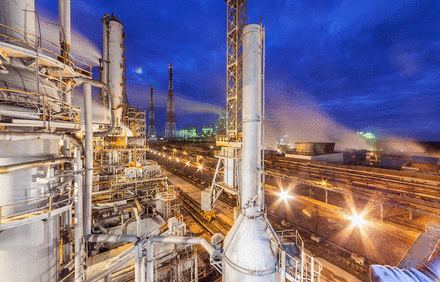Green ammonia could produce climate-friendly ways to store energy and fertilize farms

Curbing climate change goes hand-in-hand with decarbonizing energy production. But how can communities continue to meet the global demand for electricity without releasing more CO2? A cadre of chemists says one solution may be hiding in an unlikely source: ammonia—the pungent, clear, nitrogen-rich gas, or liquid, that’s most often used as an agricultural fertilizer. Most of the ammonia produced in the world goes to crops, with the rest ending up in plastics, explosives, fabrics, and other materials.
But to researchers looking for carbon-neutral energy, ammonia makes an appealing fuel. Made of nitrogen and hydrogen, it burns without releasing carbon. [In 2014, Japanese researchers unveiled the first turbine powered by ammonia combustion (1).] Ammonia is also appealing as a way to store energy that’s transported from where it’s made to where it’s needed. And some researchers say that ammonia could be used to package and store hydrogen, which could be readily cracked out of the liquid or gas and used in fuel cells.
And yet, several challenges remain if ammonia is to help with the globe’s massive carbon emissions conundrum. The conventional process for making ammonia involves liberating hydrogen from the hydrocarbons in fossil fuels, often methane, which adds CO2 to the atmosphere. By some estimates, ammonia production is responsible for roughly 2% of fossil fuel use, worldwide, and releases more than 400 millions of tons of CO2, representing more than 1% of total annual global emissions of the greenhouse gas. Those numbers aren’t likely to fall: Agricultural demand for ammonia is predicted to double in the next few decades. In addition, most ammonia applications can trigger side reactions that produce nitrogen oxide compounds, which are potent greenhouse gases that trap more heat than CO2. Ammonia-burning engines would require catalytic systems like those long used in other power plants to capture and reuse those gases, notes Douglas Macfarlane at Monash University in Melbourne, Australia.
Even if it’s made without carbon, ammonia has to be carefully managed to avoid worsening climate change in other ways. Much of the nitrogen in today’s ammonia-based fertilizers ends up in runoff; if too much ends up in a stream, for example, it can cause a widespread fish kill. Denitrificiation—part of the nitrogen cycle in which soil microbes convert nitrites and nitrates into gas—can produce nitrogen oxides.
There are also safety concerns to address. Ammonia is dangerous when inhaled. If ammonia is to play an outsized role in the future energy economy, then researchers need to ensure that it can be handled, transported, and used safely, says Macfarlane. Plus, a major scaling effort will be necessary, because ammonia-producing technologies that work in the laboratory will have to be adapted to real-world settings.
But in principle, these challenges have solutions, and ammonia could serve as both fuel and energy carrier. Chemists and engineers have started to develop ways to make ammonia without using fossil fuels, instead relying on electrochemical reactions or electrolysis. Promising results from pilot projects, such as a wind-to-ammonia plant in Minnesota, or models of a wind-and-solar-to-ammonia plant by researchers in Finland, suggest that ammonia can be made cleanly on large scales. “There’s a whole kind of space race happening at the moment in the area of green ammonia,” says chemical engineer Patrick “PJ” Cullen at the University of Sydney, Australia.
